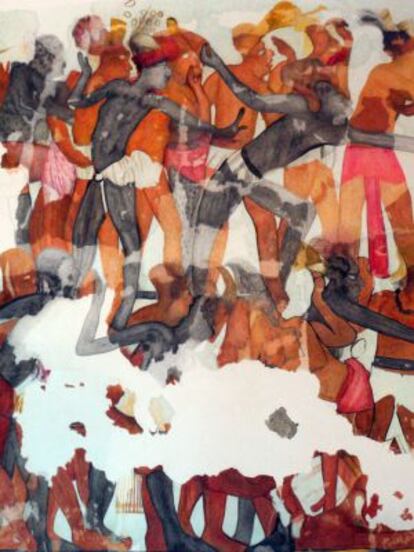Archeologists uncover Maya mural thanks to palace raiders
Spanish and Guatemalan researchers make “exceptional” fresco find


The pillagers drilled a hole into the dome of an old palace in the Maya city of Chilonché. Spanish and Guatemalan researchers working in the area were warned of their presence, and were able to ward off the ransackers. That is when the archeologists looked through the hole themselves, and discovered a mural painted in the fresco technique. The artwork, which is being described as "exceptional," was located inside a room that had been buried for centuries under jungle vegetation.
In 2013, the team's work received the "Best practices in site conservation" award from the Archaeological Institute of America (AIA). The paintings date back to the late classic period of the Maya civilization (600-900 AD) and decorate a room that was walled up by the Maya with earth and stones. This preserved the mural in a good state.
The work depicts several scenes in which people bring offerings to a special, powerful-looking figure, perhaps someone with a political post. There are men and women figures painted in black, red and ocher tones, and hieroglyphs that mention each individual's name, as well as dates. Some figures are wearing hats and hairstyles exclusive to the region. "They are offerings to characters who display noteworthy traits and which may tie in with Maya legends from the Yucatán area," said Vidal. The paintings are "exceptional" because they make up "the first mural of these characteristics," crafted with the fresco technique, ever found in Guatemala.
Besides their artistic value, they also contribute valuable historical information about Maya society at the time, explained Gaspar Muñoz and Cristina Vidal, directors of La Blanca Archeological Project, which is a joint initiative of Valencia University, Valencia Polytechnic University, and Guatemala's San Carlos University.
While the finding took place two years ago, researchers did not present it to the media until this month. The experts expect to find more paintings in the other palace rooms yet to be explored. The site is often the target of plunderers, who are systematically ransacking Guatemala's rich Maya heritage. In 2009, the research team found a large Maya mask over 2,000 years old. A digital projection of this piece is now on view at Valencia Polytechnic University.







































